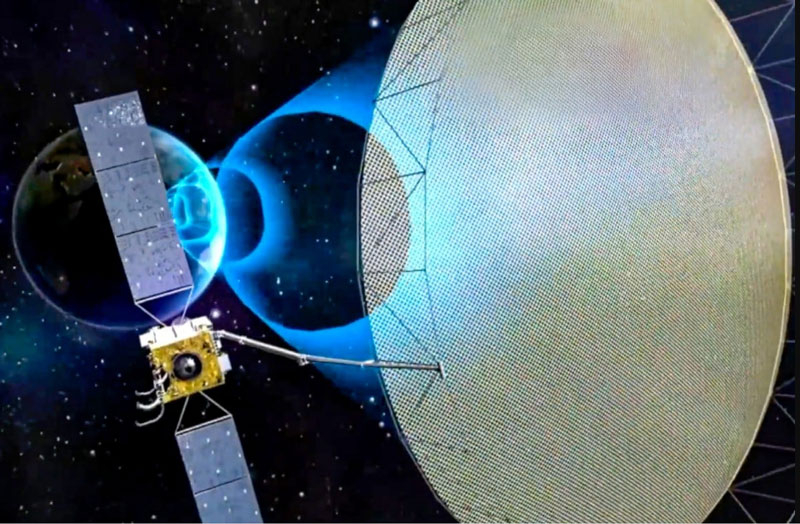China Declassifies World’s Only Geostationary Earth Observation Satellite


On August 13, 2023, a Long March 3B rocket launched the Ludi Tance 4 01 (LT-4 01) civilian radar observation satellite into space from the Xichang Satellite Launch Center. This satellite became the world’s first geostationary Earth observation satellite. The technology was proposed in the United States in 1978, but China was the first to implement it in practice, which brought China to a leading position in radar technology.


Image source: CGTN
Experts associate the declassification of the Ludi Tanze-4 mission with China’s desire to demonstrate its superiority over Western partners in the field of high technology and space. The publication of a series of scientific papers on the project in the journal Space Science and Technology helps clarify a number of features of the radar’s operation in geostationary orbit (GEO). It uses synthetic aperture technology (SAR) and provides continuous observation of a third of the planet’s surface from an altitude of 36,000 km.
The radar monitors the Asia-Pacific region around the clock, which causes concern among neighboring countries and the United States, although the officially stated purpose of its work is to prevent earthquakes, as well as to help in agriculture and forestry.
According to previous leaks, LT-4 01 is capable of resolving objects on Earth as small as 20 meters. Achieving such resolution from GEO required the development of a whole range of technologies and solutions, including the “summation” of several beams in space, which is vaguely reminiscent of the technology of the Death Star from Star Wars. Unlike low-orbit remote sensing satellites, which provide more detailed images, LT-4 01 has a much larger surface coverage, although its data takes longer to process.
To accurately guide the radar from geostationary orbit, Chinese scientists had to develop unique stabilization mechanisms and signal processing algorithms. It is the algorithms that are called the main value of LT-4 01, since they allow the restoration of heavily distorted and partially blurred images of the planet’s surface.
«By declassifying core technologies, China is demonstrating to the world its superiority in electronic warfare, said a Chinese researcher who asked to remain anonymous. “Like the open-source models of AI company DeepSeek, this will force competitors to play catch-up in areas where China has a structural advantage.”
Recent Posts
Google to Make End-to-End Encryption in Gmail Available to Everyone
Google plans to roll out end-to-end encryption (E2EE) of email to all users, even those…
Putin Bans Government Agencies and Banks from Communicating with Clients via Foreign Messengers
Vladimir Putin signed a law aimed at protecting citizens from telephone and cyber fraudsters: employees…
OpenAI has promised to release an open-source reasoning AI model in the coming months
«In the coming months, OpenAI plans to release an open source large language model of…
Blue Origin Finds Out Why It Lost Its New Glenn Rocket’s Reusable Stage During Its First Launch
The US Federal Aviation Administration (FAA) has announced that it has received a document containing…
British woman accidentally throws away her fiance’s £3m Bitcoin wallet
During spring cleaning, UK resident Ellie Hart threw out a USB device with the trash,…
$100 billion as a blind: experts doubt TSMC’s plans to develop factories in the US
Early last month, TSMC announced plans to spend another $100 billion to expand its U.S.…